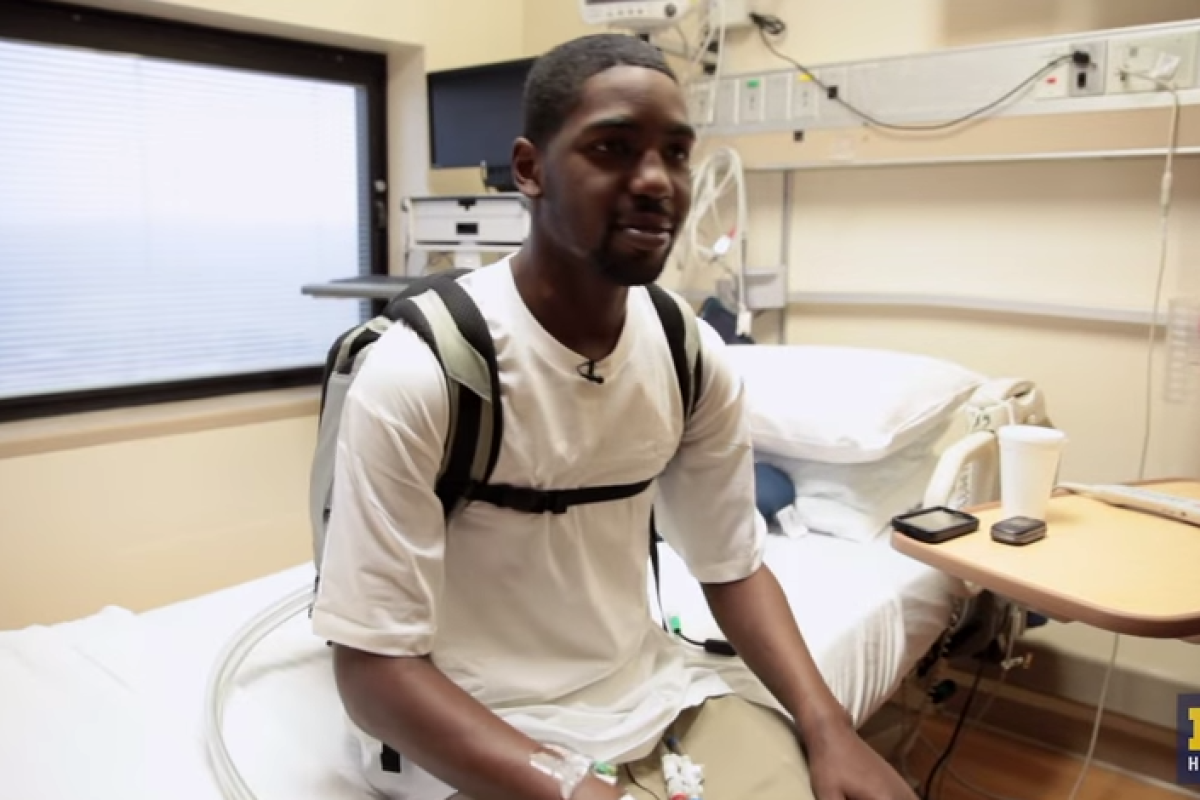Heart failure patients awaiting organ transplants normally find themselves anchored to the hospital bed by a washing machine-sized device that keeps blood pumping through their veins. But for Stan Larkin, a patient at the University of Michigan Frankel Cardiovascular Center, a new form of wearable technology is allowing him to keep on the move. The Freedom Driver is a compact, mobile version of the same machine that allows patients like Larkin to go about their normal lives while they wait for a matching donor heart to arrive.
On any given day there are around 3,000 people in the US on the waiting list for a heart transplant, according to the National Heart, Lung and Blood Institute. This organ shortage means that sufferers of advanced heart failure are implanted with devices to aid in survival. In Larkin's case this involved the removal of his heart and replacing it with an artificial organ, a temporary solution that would keep him alive until another heart became available.

What drives power to Larkin's artificial heart, and others like it, is a machine that delivers compressed air into the ventricles via two tubes. At first, Larkin was hooked up to the larger, washing machine-sized device. Known as Big Blue, the machine weighs 418 lb (190 kg) and often sees patients remain in hospital for months or even years at a time.
But in June 2014, the Food and Drug Administration approved the aptly named Freedom Driver. Weighing 13 lb (5.9 kg) it performs the same task as Big Blue but is designed to be portable, fitting snugly inside a purpose-made backpack. Patients must meet a certain discharge criteria to make the switch from Big Blue to the Freedom Driver, but once they do they are free to leave the hospital and wait for their new heart at home.

Larkin's departure from hospital marks the first time that a patient has been switched over to the Freedom Driver at the University of Michigan hospital, and also the first of its patients to take it home in his backpack. He works with therapists to sustain his mobility with the Freedom Driver onboard, is on a number of blood-thinning medications and eats low sodium meals.
"He’s still listed for a heart transplant and we hope to transplant him as soon as an organ is available," says Jonathan Haft, a cardiac surgeon at the University of Michigan. "In the meantime he can be at home, he can be functional, and continue to rehabilitate himself so he’s in the best possible shape when his opportunity comes.”
You can hear from Larkin in the video below.
Source: University of Michigan






